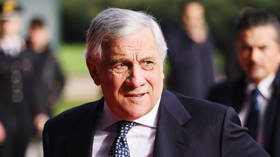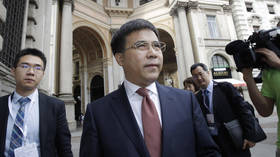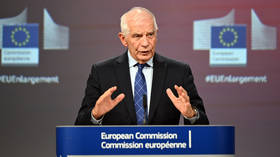Central Bank of Russia gives rates a further trim
The Central Bank of Russia has cut the key refinancing rate for a 13th time in a year, bringing it to 8% ahead of an expected return of inflationary pressure in the second half.
With the bank saying the cuts were focused on boosting lending and making credit easier to get, it also cut the 1 and 7 day repurchase rates to 7%, and the overnight deposit rate to 2.5%.
The statement noted that inflationary pressure have continued to ease in Russia with April inflation likely to fall from the 6.5% posted for March, while an economic recovery continued to gain traction.
“The trend of main economic indicators points to a gradual forming of a recovery trend in economic growth . . . But on the whole, the recovery of the economy remains unstable, there remains a need to support the dynamics of domestic demand.”
The statement indicated that rates could conceivably come down further.
“Thus, if year-on-year inflation continues to fall in the nearest future, its trend may demand more detailed analysis in order to take decisions on the advisability of future changes in interest rates.”
Finance Minister Aleksey Kudrin said he supported the move, which would make loans to the real sector of the economy cheaper.
“Any decision by the Central Bank to lower the refinancing rate is entirely its decision, as it appraises any future prospect of decrease in the inflation rate in Russia. Inflation is assessed by the Central Bank, so if it’s confident that inflation will be lower than 8%, then I will support it. Of course the rate should go down. Right now the Central Bank controls this decision. This will make commercial loans, loans to the real sector cheaper. So, this is a positive decision.”
Mark Rubinstein head of research at IFC Metropol says the rate cut reflects a need for more to boost aggregate demand.
“The reasons for another rate cut remain the same as before. First, the Central Bank wants to reduce the overall average rate level in the economy and revive Russia’s credit market this way. And second, to cut inflow of speculative capital into the country, which is less important really.”
Clemens Grafe, chief economist at UBS Russia, says the move reflects complex underlying reasons relating primarily to the central bank.
“There are basically three motivations for the CBR, one is obviously inflation, one is growth, and the third one which is their own financial position. I think at the moment most interest rate cuts are probably driven by their own financial condition. They are lowering interest rates, but no bank is really borrowing from the central bank at the moment because the interest rates are higher than the market rates, so effectively lowering the rates doesn’t push money out into the economy. What it does is also lower the deposit rate and they are borrowing at the deposit rate from the bank so they have to pay interest to the bank at that rate, so if they lower that they basically pay less on that deposit than before but they will not lend more. What that does is improve their financial performance, because they are not really getting any interest income because nobody is borrowing from them but they are borrowing from the bank and paying an interest rate, so by lowering the interest rate they are lowering their credit costs.”
Grafe adds that this is coupled with the central bank’s currency management role, and less by either inflation or economic growth.
“At the moment the bank needs to borrow a lot of money from the banks to avoid further strengthening of the Rouble and that is very expensive for them and the lower the interest rate is the cheaper that is for them.
I don’t think these interest rate cuts are driven really either by concerns about growth or inflation, I think they are basically driven by lowering the cost of keeping the Rouble from appreciating further.”












